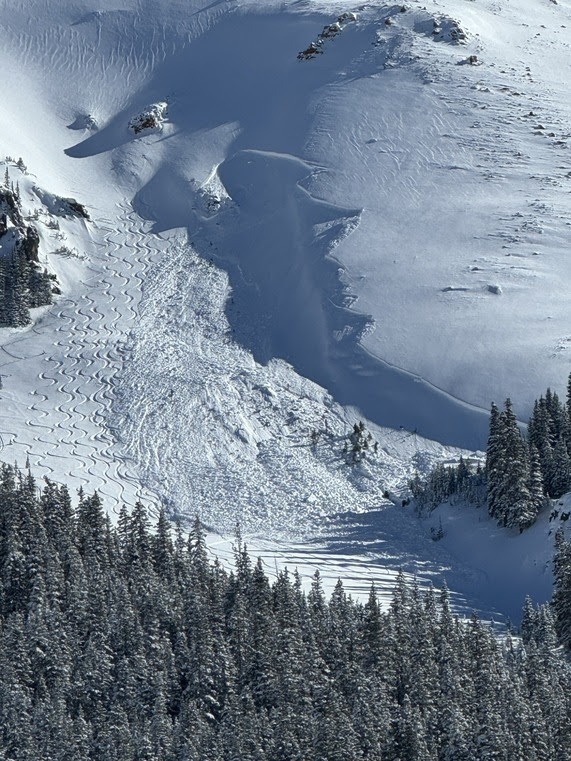Widgetized Section
Go to Admin » Appearance » Widgets » and move Gabfire Widget: Social into that MastheadOverlay zone
CO avalanche officials remind public 40% of fatalities happen at moderate danger levels

Earlier this month, a Ridgway man was killed in an avalanche in the San Juan Mountains at MODERATE avalanche danger. Click here for full CAIC fatality report.
The Colorado Avalanche Information Center (CAIC) recently issued the following press release on avalanche danger over the Martin Luther King Jr. holiday weekend:
As avalanche danger across much of Colorado drops to MODERATE (2 of 5) for the first time in weeks, the Colorado Avalanche Information Center (CAIC) is urging backcountry travelers to continue to use caution this holiday weekend. Historically, the Martin Luther King Jr. holiday weekend has been a high-risk period, with fatal avalanche accidents occurring during this weekend in four of the last 13 years. Although the overall danger is decreasing, avalanche conditions continue to be more complex than a typical January in Colorado.
“We’re worried about an avalanche accident this weekend. While there isn’t such a thing as a typical Colorado winter, the conditions we’ve been seeing are unusual,” said CAIC Director Ethan Greene. “Over the last few weeks we’ve seen people trigger large and very large avalanches almost every day under a CONSIDERABLE (3 of 5) avalanche danger rating. We’re now 5 days from the last big snowstorm, and the avalanche danger is slowly decreasing, but conditions are still far from safe. We are issuing the most accurate danger ratings for the current conditions, but we don’t want people to feel that level 2 of 5 means that the danger is gone and its time to step out into bigger avalanche terrain.”
According to the North American Public Avalanche Danger Scale, at MODERATE avalanche danger:
- Human-triggered avalanches are possible.
- Avalanches could be large in isolated areas.
- Careful evaluation of snowpack and terrain is essential.
One atypical aspect of this season is how long the majority of Colorado remained at CONSIDERABLE (3 of 5) to HIGH (4 of 5) avalanche danger—from December 26 to January 15. While the danger has now decreased in many places, parts of the Northern Mountains—the Park Range and Front Range near and east of Rocky Mountain National Park—remain at CONSIDERABLE danger due to ongoing avalanche activity and up to a foot of new snow expected by Saturday morning.
Research by CAIC shows that 40% of Colorado’s avalanche fatalities occur during MODERATE avalanche danger, 40% during CONSIDERABLE danger, and 20% during HIGH danger. Earlier this month, a Ridgway man was killed in an avalanche in the San Juan Mountains at MODERATE danger (see final accident report here).
“People often ask us about these data: ‘Why do more people die as the danger gets lower?’ There are a lot of factors, but a simple explanation is that people tend to understand how dangerous things are and stay out of avalanche terrain when the danger is HIGH,” Greene explained. “They also understand what LOW danger means. At MODERATE or CONSIDERABLE the danger may not be obvious but more travelers venture into avalanche terrain, sometimes with fatal consequences.”
For the latest avalanche conditions, always visit CAIC’s website at Colorado.gov/avalanche. The CAIC strongly advises all backcountry travelers to check the avalanche forecast regularly and adjust their plans accordingly. Always carry proper avalanche safety gear, including a transceiver, probe, and shovel, and know how to use them. Avoid avalanche-prone terrain during periods of heightened danger.


